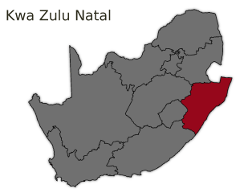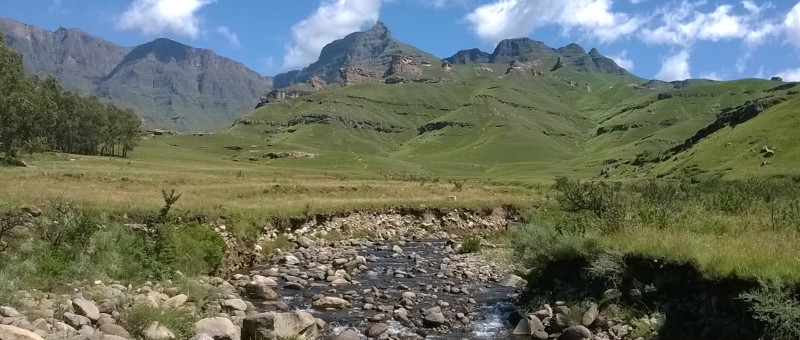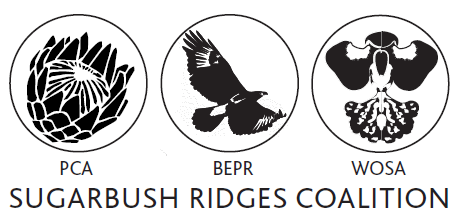 Orchids in KwaZulu-Natal
Orchids in KwaZulu-Natal
- Introduction
- Species List
- Species Flowering Months
- Red List Endangered
- Orange List Threatened
- Credits
The province of KwaZulu Natal falls within the summer rainfall region of South Africa with a wide range of topography, ranging from the top of Drakensberg at over 3000 meters above sea level down to the sub-tropical coastal belt. This has created a wide range of habitats ranging from Alpine grass and scrub down to grassland, open savannah and finally subtropical coastal forest. As a result a correspondingly wide range of orchid flora can be encountered.
The grassland areas of the KZN interior are home to many terrestrial orchids, which survive as subterranean bulbs, dormant in winter and growing and flowering in the summer season.
The river valleys and coastal belt are home to bush and forest, which support a range of epiphytic (tree-dwelling) or lithophytic (growing on rocks) orchids and orchids which inhabit the forest floors. All in all, a total of about 180 terrestrial and 44 epiphytic orchid species have been recorded for the Province (Johnson & Bytebier, 2015).
KZN is fortunate to have a number of fairly large conservation areas. The most notable are the uKhahlamba-Drakensberg Park, the Hluhluwe–Imfolozi Park and the iSimangaliso Wetland Park.
The uKhahlamba-Drakensberg Park is about 2,428 km2 in extent and stretches some 150 km along the eastern border with Lesotho. The Hluhluwe–Imfolozi Park consists of 960 km² of hilly bushveld located in central KwaZulu-Natal. This reserve is well known for its efforts in rhino conservation, but also contains a rich floral heritage. The 3320 km2 iSimangaliso Wetland Park spans 280 km of coastline, from the Mozambican border in the north to the Lake St. Lucia estuary in the south. It consists of major lake and estuarine systems, most of South Africa’s remaining swamp forests and some of the world’s highest vegetated coastal dunes. In this pristine environment, tropical orchid species found more commonly north of our borders occur. KZN also boasts a number of smaller provincial, municipal and private conservation areas.

Unfortunately, outside of the formal conservation areas, the environment has suffered the same ravages as elsewhere in South Africa, viz. bad farming practices, habitat destruction, agriculture and deforestation, irresponsible development etc.
WOSA was established at the World Orchid Conference in Sandton in 2014 and is leading a National Initiative to conserve and propagate indigenous orchids. In most cases our terrestrial orchids cannot be translocated successfully and we have embarked upon research projects, hopefully to overcome these hurdles.
This website clearly describes our modus operandi in mobilising support in establishing WOSA Chapters countrywide to conserve orchids in their natural habitats, and work towards creating reserves, protected areas and other safe havens in which to translocate plants.
For more information regarding the preservation of South Africa's wild Orchids or if you would like to get involved please email This email address is being protected from spambots. You need JavaScript enabled to view it. or complete this short form Contact Us and we will contact you.

